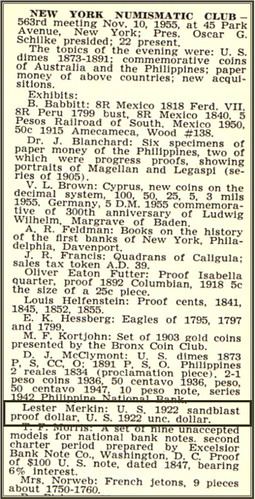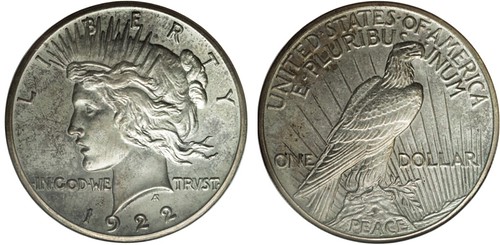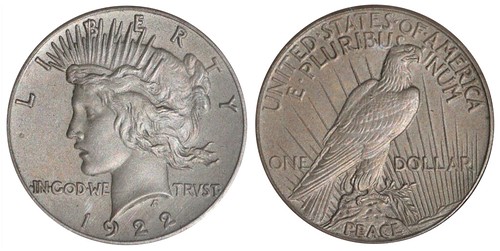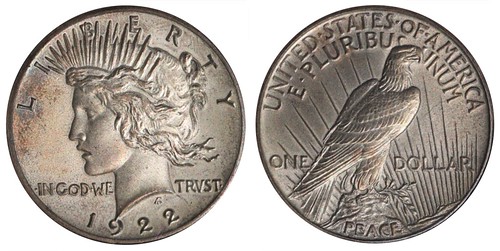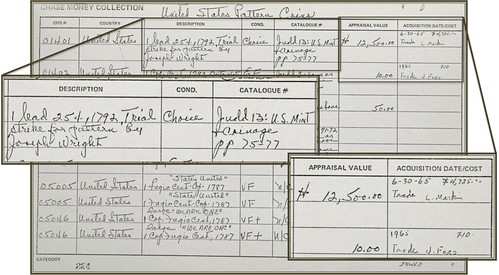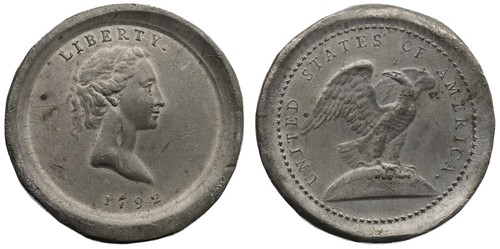
PREV ARTICLE
NEXT ARTICLE
FULL ISSUE
PREV FULL ISSUE
V25 2022 INDEX E-SYLUM ARCHIVE DON TAXAY'S GREAT TRADEDouglas Ward submitted this article about "The Great Trade" orchestrated with the Chase Manhattan Bank Museum by Lester Merkin and Don Taxay. Thanks! -Editor
Enigmatic Numismystique: Don Taxay's The Great Trade
Pete Smith's biography of Donald Paul Taxay reminded me of an enigmatic connection and added some interesting knowledge. In his article he relates that Don Taxay was somewhat nomadic in his life and numismatic endeavors. But among his numerous acquaintances was a fellow musician and numismatist, Lester Merkin of New York City. They were likely introduced by John J. Ford or Walter Breen, with whom Taxay had worked at the New Netherlands Coin Company in the early 1960s. Ford and Taxay would author a number of articles on counterfeit coins for The Numismatist and Coin World. And in 1963 he would form an authentication company with Breen. Don Taxay and Lester Merkin likely became good friends with similar backgrounds and interests. Both had begun their careers as dealers at about the same time in the late 1950s.
Even so, it received only
minor billing; being described as a
Such questioning would have also lead to Walter Breen, who had become an expert
on the subject. When Donald L. Rhodes acquired the third known specimen in early 1958,
he sent it to Breen for authentication against the Zerbe and Discovery Coins. All three
would be described in Breen's 1961 article Merkin would likely learn of a second specimen's existence from Vernon L. Brown who was also present at the pivotal 1955 meeting. He was a NYNC regular and long time member of the prestigious club. Brown was also curator of the Chase Manhattan Bank Moneys of the World Museum, a position he assumed after Farran Zerbe's retirement in 1939. He would retire in 1964 and Don Taxay would become the museum's new curator, likely on the recommendations of John J. Ford and Walter Breen. The Museum's specimen was attributed to Zerbe's original 1922 acquisition from the Philadelphia Mint. Ironically, also present at the meeting was Mrs. R. Henry Norweb, who was apparently unaware she also owned a specimen within the vast Norweb holdings!
In 1965 the Zerbe Specimen lay peacefully in the Chase Manhattan Bank, quietly
awaiting its eventual fate as a relic in either the Smithsonian or American Numismatic
Society collections. Twelve years later the Chase Museum would close and its massive
collection dispersed to the more renowned and eternal archives. Then clandestinely on
June 30th Lester Merkin and Don Taxay orchestrated what could be called
A year later, Taxay did not relate the trade in his 1966 book The coins received in this trade were recorded in the Chase Money Collection inventory, released in the early 1970's. The most valuable of these was a 1792 white metal 25 cent trial strike, Judd-13, by Joseph Wright, costing $4,725 and appraised at $12,500. A recent sale of one discovered in the New York Historical Society brought $1,260,000. There were 15 pattern pieces listed with a combined declared cost of $12,480 and an appraised value of $29,855. This fabulous amount attests to Merkin's 1922 Proof Peace Dollar fever, since $3,100 had been the highest price reportedly paid for a specimen up to that time.4 He was especially proud of his Discovery Coin and held it until his death in 1992. On Taxay's departure as curator in 1966, Merkin would recommend another good friend, numismatist and fellow orchestra musician, Gene Hessler, for the position. Whether termed The Great Trade, The Great Raid or The Great Escape, it's another enigmatic chapter in Peace Dollar and numismatic lore. 1792 25 cent pattern Judd-13. Provenance: American Numismatic Society, 1977; Taxay for the Chase Manhattan Bank Money Museum, June 30, 1965; Merkin from Century-Paramount, April 30-May 1, 1965, lot 53. United States Mint, Philadelphia. Joseph Wright designed; very likely a pattern intended as a quarter dollar. Two specimens are known in bronze (SI-NMAH 1991.0357.0121) and four in white metal. A specimen in white metal from the New York Historical Society recently sold at auction for $1,260,000 (Heritage, April 22-25, 2021, lot 4960). Image courtesy of the American Numismatic Society, 1980.66.2. REFERENCES: New York Numismatic Club meeting minutes, 10 November 1955, The Numismatist, Vol. 69, No. 1, p. 61.
The 1922 Type of 1921 Peace Dollar by Walter Breen, The Numismatic Scrapbook Magazine, Vol. XXVII, No. 7, July, 1961, p. 1721-1729.
To read the earlier E-Sylum article, see:
Wayne Homren, Editor The Numismatic Bibliomania Society is a non-profit organization promoting numismatic literature. See our web site at coinbooks.org. To submit items for publication in The E-Sylum, write to the Editor at this address: whomren@gmail.com To subscribe go to: https://my.binhost.com/lists/listinfo/esylum All Rights Reserved. NBS Home Page Contact the NBS webmaster 
|
